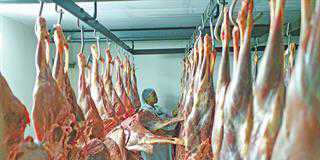The Red Poll originated in England in the early 19th century, when farmers crossed the Norfolk Red, a blood-red, hardy, early maturing breed noted for its good quality meat, with the Suffolk Dun, a polled (hornless), light-red breed known for its milk production.
Both of these breeds are now extinct, but their meat and milk qualities live on in the Red Poll, which first arrived in South Africa in 1896.
The Red Poll Cattle Breeders’ Society of South Africa lists five advantages of the breed:
- It is naturally polled. When Red Poll bulls are crossed with other breeds, 95% to 100% of the offspring will be polls (hornless). This, along with the breed’s quiet temperament, reduces stress and carcass bruising during handling and marketing, helping to ensure tender, good quality beef.
- It is a true dual purpose breed, with quality beef and high milk production. Red Polls are also able to forage efficiently in dry areas, making them economical to run.
- The breed is one of the most fertile recorded by the Agricultural Research Council. Many cows breed well past 10 years of age.
- Red Poll cows have excellent mothering ability and produce quality milk. Weaner weights are often among the highest recorded.
- Red Polls have fewer sunburn and eye problems than other breeds, thanks to the solid, dark-red coat and eye and udder pigmentation. This characteristic is extremely strong. Red Polls produce 80% to 95% red cattle when interbred and the pigmentation virtually eliminates eye cancer when Red Polls are crossed with white-face breeds.
For more information, contact the Red Poll Cattle Breeders’ Society of SA on 082 857 3980, or 073 339 7165. Website: www.redpollsa.co.za
Sources:
The Red Poll Cattle Breeders’ Society of SA
Beef Cattle Management (ARC-Animal Production Institute, Irene)













